The self-proclaimed “Captain of 3D” talks to Tyler Pukatch about Dreamworks’ plans for the inaugural 3D Creative Summit at the BFI in London from March 27-28.
Phil McNally started doing stereoscopic work in 1991 in London as a “hobby” while designing furniture, eventually moving to the US in 2001 for an animator position at Industrial Light & Magic, where he was soon thereafter tasked with converting Chicken Little to 3D in 2005.
Now a stereoscopic supervisor at Dreamworks Animation, McNally has held top 3D responsibilities on movies like Puss in Boots, How to Train your Dragon and Dreamworks’ first stereoscopic 3D film, Monsters vs Aliens.
McNally’s latest project, The Croods, premiered in the US on Friday [22], before the anticipated July 19 release of McNally’s current project, Turbo, about a snail with major league racing ambitions.
When did you know digital 3D projection had a place in cinema?
Even though I was there as an animator, I became the unofficial stereo supervisor for Chicken Little. I realised at that point, with the digital cinema, how capable it was, in showing either 2D or 3D. It could kind of actually be the game changer to make it mainstream. The reason why it was so game-changing is because, something that is essential for good 3D, is the perfect registration of the left and right eye. With the digital projector, that pixel from the left eye and that pixel from the right eye are perfectly lined up. It’s coming out of one lens and perfectly square. I looked at that and thought [that] if that projector can basically do a 2D movie or a 3D movie and still use the same screen but you can either use the theatre for either 2D or 3D, and it’s the same equipment, and with people going digital… that makes it sort of a no-brainer.
What do you hope to accomplish at the upcoming 3D summit?
I’m taking the opportunity to do it like a little bit of a retrospective, and we have some good content of showing the process of how we work in 3D, like going all the way back to Monsters vs Aliens, and a tiny little bit of history of my interest in 3D and where that came from. So I’m going to actually try and pack in as much stuff as I can, and show as many clips from How to Train your Dragon, Puss in Boots, The Croods, obviously, and we have a couple of teaser pieces from Turbo which won’t have been seen anywhere, so, looking forward to showing those. Something beyond the trailer, we just got clearance to show it!
What was the 3D objective for The Croods?
[Dreamworks head of layout Yong Duk and I] sat down and we just said, we just want to make a really good, strong, 3D movie. So we actually used more depth in Croods than we’ve used on any of the movies before. Because there’s been quite a bit of push back about 3D and not being different enough from the 2D version of a movie, and the ‘is it worth it’ type of question. The public is very aware they’re paying more money for the 3D version of the movie, and they have to wear glasses, which most people see as negative.
So, if the 3D movie isn’t going to be significantly different from the 2D version, what’s the point? We really went with that approach. The 3D is going to be strong and noticeable, and full volume throughout the whole movie, and you’re really going to see it in set dressing, especially when you look into the sequences, like when they fall into a jungle sequence. The way the sets are dressed and balled up… it’s really, the more stuff you pack into a frame, the better it looks in 3D. We really concentrated on that as well.
A lot of 2D filmmaking is about simplifying the frame. Shallow focus, for example, is a very 2D technique, where you blow out the background so that you don’t get distracted by it. In 3D, you put a lot of detail into a frame and still have it sharp and look fantastic. Really, the approach was, what are we going to do that’s going to make the 3D version significantly different than the 2D version? So when people look at it in 3D, there’s no doubt that they saw a 3D version of the movie. Go big or go home.
Have there been any recent game-changing technological innovations in 3D cinema?
Technology-wise, in terms of how they render, it’s more for the lighting guys. The stereo technology has been pretty solid now for a few years. So it’s more just a matter of how much you want to dial up the 3D, or what you want to do with it.
It was more automating the process. On Turbo, I’ve developed software in-house so that it measures all of the stereo settings, and it measures all of the distances and applies stereo settings from a database that’s really like all the back catalogue rolled into a big database of what stereo settings we think look good. On Turbo, actually, I’ve set every shot myself. It’s been possible to set every shot myself using the new version of the software. And that’s unheard of in the current working situations. There isn’t another studio in the world that can do that right now. It’s the McNally Auto-Stereo Calculator.
When a movie starts, it’s pretty typical to lock down what software version you’re on, fairly early because you can’t keep updating through the process. [On The Croods] the movie had already locked down on the versions of the software at that time, and even those versions tend to be a little older than what’s coming next, so Maya 2009 was actually the version that we were working in. It’s funny, working on the current movie, like Turbo, alongside The Croods, I had that contrast of we’re on the latest version on Turbo, and on the software on Croods, it’s like ‘Oh yeah, that’s right, we don’t have that button!’
For me, Dreamworks has been the perfect laboratory to work out what we’d be making, because the computer graphic environment is super friendly to experimenting. We also have the computer graphic environment where our actors don’t complain if we have to re-shoot, and re-shoot, and re-shoot… we’re just hitting the play button, and we can try more, less, changing the stereo in the shot, and we can really just do that as many times as we want until we like what we’ve got, which is obviously incredibly difficult on a live action set.
The way animation is constructed, you edit first, and then create the shots later, so you edit using your direct storyboards, and then slowly, you increase the quality of each shot until it finishes. So knowing how a sequence cuts together is incredibly beneficial when you’re trying to design your stereo. And that’s something that people typically don’t have in live action as well, so they have to shoot stereo in a way that is possibly more conservative because they don’t quite know how it’s all going to fit together yet. We know how it’s going to fit together so we can really tune the stereo on a shot by shot basis, and we already have it locked down. It’s hard to beat that.
What has the 3D process on Turbo been like?
The main thing with Turbo, is, of course, it’s a racing snail, going fast with gigantic cars. One of our key things is to try and get that sense of he’s this tiny thing racing against these giant monster machines, and so that has been one of the key things that we’ve been trying to get right. I’m cutting between them because sometimes the perspective is from the person, or who’s in the car, you see a little tiny snail on the track. The scale is something like Transformers.
How do you see the 3D cinema industry evolving?
From the professional side, I’m always encouraging people to make sure the 3D makes a difference. That’s my number one thing. I’m really pushing for the idea that if you’re not doing something significant with it, don’t bother, because it’s a lot of work, you’re asking people to pay more money and make more effort to watch it, so make it significant and make it a bold statement and enjoy what you do and don’t be anxious about it.
I’d like to see much bolder statements where you can clearly see a 3D style here, which is different from over here, where the audience comes out and goes, ‘wow, that was worth the extra effort’.
Purely from a stereo technique, because that’s what the summit is all about, we set out to make this bold, deep, fully formed, fully spacious 3D movie, and I think that’s what we have achieved, and hopefully it’s an example of don’t be shy on using big numbers and make it look good. It’s all about learning what it can do. The bottom lines is, the audience goes in, and just wants to be entertained. If they paid more, they want to be entertainment more than the people who paid less. It’s that simple.



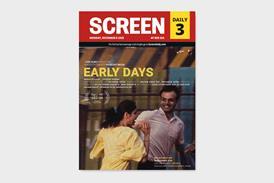


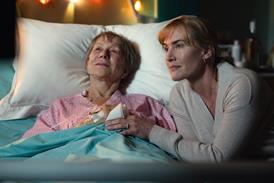
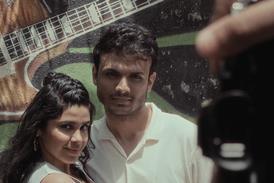




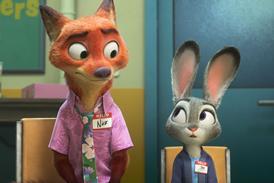

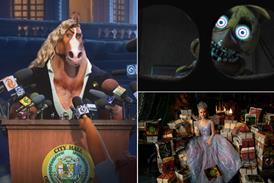

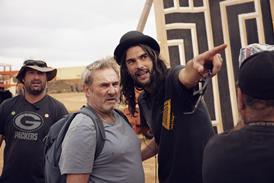




No comments yet